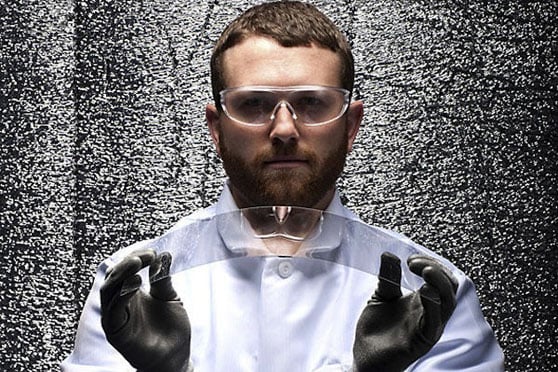Glassmaker unveils its fourth-gen smartphone display glass as it looks to maintain its dominance in the display business.

Corning is working on saving your phone from the dreaded front-screen spider web.
The company on Thursday unveiled Gorilla Glass 4, the latest version of its leading hardened cover glass for smartphones and tablets. Corning claims the new material is about twice as tough as its predecessor, Gorilla Glass 3, which should help prevent even more cracked screens.
"We already have the best glass out there -- I'm very confident about that -- but it's not good enough, so we've made it better," Dave Velasquez, a Gorilla Glass marketing director, said in an interview.
Gorilla Glass 4 should help Corning extend its dominance over the hardened-display glass business -- last year it controlled over 80 percent of the market, according to Bernstein Research. Gorilla Glass is used in Apple's new iPhone 6 and6 Plus, Samsung's Galaxy Note Edge and dozens of other phones, tablets and smartwatches. But, it's facing more pressure these days. Corning needs to keep up with the fast pace of mobile-device updates and synthetic sapphire, a super-scratch-resistant material, getting a lot of attention as an alternative display cover. Considering those challenges, the company must keep improving its glass to stay on top.
The new display glass is already in full production and will be in devices that go on sale before the end of this year, Velasquez said, though he couldn't say from which manufacturers.
In drop tests using Gorilla Glass 4, the new material was about twice as likely to survive a 1-meter drop onto a rough surface (Corning uses 180-grit sandpaper for these tests) than Gorilla Glass 3. In these drops, with the cover glass hitting face down right on the floor, Gorilla Glass 4 survived the fall up to 80 percent of the time. Comparatively, soda-lime glass, a non-hardened glass, used in bottles and windows, broke in these tests nearly 100 percent of the time.
"The cover glass is going to break less often, particularly on a rough surface," Velasquez said.
So, what makes it tougher? Velasquez said the latest Gorilla Glass is a new composition of the material, though he declined to go into specifics.
No comments:
Post a Comment
Tell Us What You've Got...